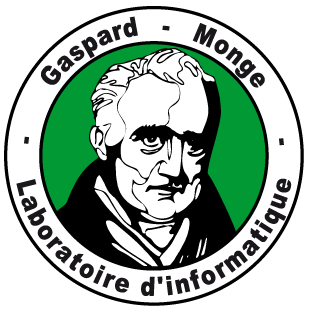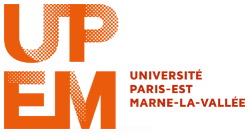ISIPhyNC - Class: binary tree-based
Definition
A phylogenetic network is binary tree-based if it is binary and it is tree-based. [reference]Bibliographic references on the Who is who in phylogenetic networks
Relationships with other phylogenetic network classes
Maximum subclasses
- binary compressed [reference] (The parents of any reticulation vertex of a binary compressed network N are not reticulation vertices, so according to Proposition 3, N is tree-based.)
- binary level-2 [reference]
- binary tree-sibling
Minimum superclasses
Problems
Positive results proved for this class
-
No positive result found
Positive results deduced from superclasses
- Phylogenetic Network Isomorphism, positive result on binary: The phylogenetic network isomorphism problem can be solved in O(n4) time on binary networks. Simulations show that the algorithm is practical, with instances of 500 vertices solved in less than one tenth of a second. [reference]
Negative results proved for this class
-
No negative result found
Negative results deduced from subclasses
- Cluster Containment, negative result on binary regular: NP-hard, reduction from Cluster Containment in general graphs using:
- Tree Containment, negative result on binary tree-sibling: NP-hard, reduction from Tree Containment on binary networks. [reference] (Theorem 3)
- Tree Containment, negative result on binary regular: NP-hard, reduction from Tree Containment on binary networks. [reference] (Theorem 3)
Properties
Properties proved for this class
- Completeness for reconstruction from trees: Starting with any tree T, we can build a binary tree-based network N based on it which contains all possible trees on the same set of leaves than T. The gadget consists in adding arcs just above the leaves of T. n-1 blocks of arcs must be added, where a block is a set of all possible arcs from the arc above leaf i to the arc above leaf j for i<j, added successively. [reference] (Proposition 4 provides a tree-based network which displays all trees on n leaves with O(n3) arcs.)
Properties deduced from superclasses
-
No property could be deduced from superclasses.
Properties deduced from subclasses
-
No property could be deduced from subclasses.
Examples of networks
In this class
proved directly:
network #12 : Removing the reticulation arcs (c,a) and (d,b) provides a tree this network is based on.
network #1 : Removing the reticulation arcs (f,a), (e,b) and (d,c) provides a tree this network is based on.
Deduced from class inclusions: network #5 (deduced from the inclusion of "binary unicyclic" in this class), network #14 (deduced from the inclusion of "binary compressed" in this class), network #12 (deduced from the inclusion of "binary tree-sibling" in this class), network #17 (deduced from the inclusion of "binary level-2" in this class), network #6 (deduced from the inclusion of "binary galled tree" in this class), network #11 (deduced from the inclusion of "binary FU-stable" in this class), network #7 (deduced from the inclusion of "binary galled network" in this class), network #9 (deduced from the inclusion of "binary distinct-cluster" in this class), network #13 (deduced from the inclusion of "binary normal" in this class), network #22 (deduced from the inclusion of "binary normal" in this class), network #1 (deduced from the inclusion of "binary galled network" in this class), network #21 (deduced from the inclusion of "binary galled network" in this class), network #24 (deduced from the inclusion of "binary regular" in this class), network #2 (deduced from the inclusion of "binary galled network" in this class), network #8 (deduced from the inclusion of "binary nearly tree-child" in this class), network #18 (deduced from the inclusion of "binary galled network" in this class), network #4 (deduced from the inclusion of "binary FU-stable" in this class), network #15 (deduced from the inclusion of "binary normal" in this class)
Not in this class
Proved directly:
network #10 :
network #3 : Suppose N is tree-based, and consider the tree T it is based on. If reticulation arc (c,d) is chosen in T, there would remain no leaf below h in T. A symmetric argument works for arc (h,d) and c, which leads to a contradiction.
Deduced from class inclusions: no network found outside this class using class inclusions
About this website
This website was programmed and is maintained by Philippe Gambette. It was started during the internship of Maxime Morgado at LIGM, in June-July 2015, and also contains contributions made from Narges Tavassoli from November 2016 to January 2017.
Please contact Philippe Gambette if you have any suggestions about this website, especially about problems, properties, results or subclasses to add.
How to cite
P. Gambette, M. Morgado, N. Tavassoli & M. Weller (2018) ISIPhyNC, an Information System on Inclusions of Phylogenetic Network Classes, manuscript in preparation.
Database content
73 classes of phylogenetic networks including 35 classes of binary phylogenetic networks (defined in a total of 20 bibliographic references), 51 inclusion relationships proved directly between classes (including some found in a total of 9 bibliographic references), 24 networks (68 memberships to a class, 56 non-memberships to a class), 3 problems considered, 3 properties considered, 37 theorems proved directly (including some found in a total of 17 bibliographic references) including 26 positive results (which can be extended to subclasses) and 11 negative results (which can be extended to superclasses).

